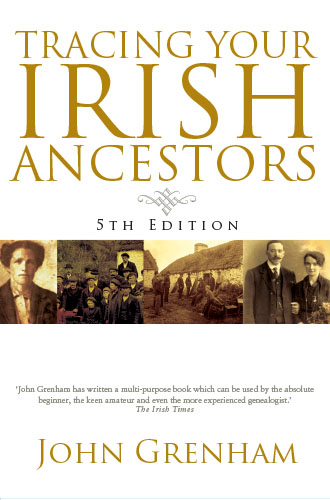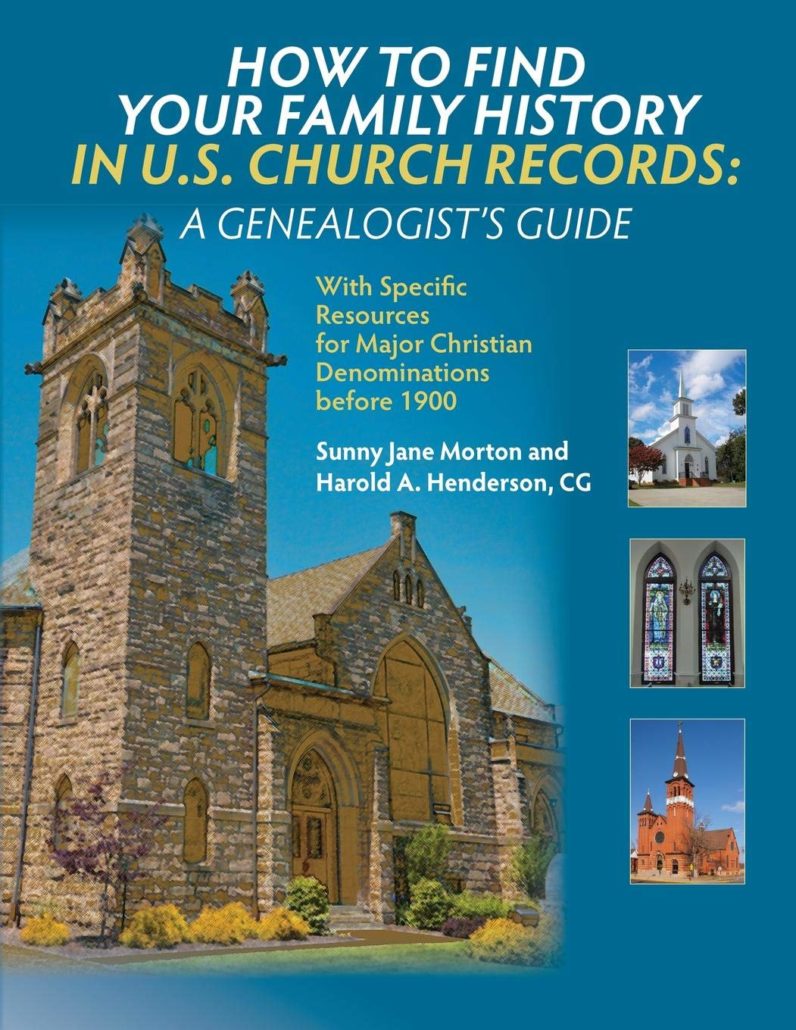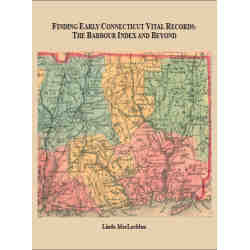
Please Note: There are two separate reviews in this article. Please scroll down to review both.
Tracing Your Irish Ancestors, 5th ed.
Author: John Grenham
Publisher: Genealogical Publishing Company http://genealogical.com
Publication Year: 2019
Pages: 650, xxi
ISBN: 978-0806320977
Price: $38.50
Reviewed by Mary Kircher Roddy, CG, of Seattle, Washington
John Grenham first wrote Tracing Your Irish Ancestors in 1991 and revised it several times in the last 28 years as more records have been uncovered. The explosion of the Internet has changed the face of genealogy all around the world, and Ireland is no exception. In this new edition, Grenham has added substantial additional content, focusing more on online research. The period since the fourth edition has seen several major record collections come online, including the National Library of Ireland’s Catholic parish register images and the General Register Office’s (GRO) birth, marriage, and death records.
Tracing Your Irish Ancestors serves as a detailed guide for genealogists just beginning their research in Irish records. Covered record types include church records (several denominations), property records, wills, deeds, newspapers, directories, and more. Grenham provides thorough descriptions of what kinds of information might be found in each record type, and how that might be useful in furthering the genealogical quest. For many of these record types, he highlights which websites hold these different records. More importantly, he explains search techniques in the various sites, based on which site has indexed which particular search parameters.
Chapter 5 is devoted to internet resources. In addition to general research techniques, Grenham covers the major sites, both pay and free, and what types of records they hold. The chapter also covers records by type—census, property, migration, graveyards, etc.—with lists of URLs and descriptions of online sources for each category.
Chapter 13, “County Source Lists,” provides 250 pages on the 32 counties of Ireland. Topics for each county include census returns and substitutes, online sources, gravestone inscriptions, and estate records. Each county’s section also includes a list of publications subdivided into local histories, local journals, and directories.
Another chapter lists the Roman Catholic parish registers, microfilms, and transcripts available online and offline. Each county’s section has a map of the parishes, followed by an alphabetical list by parish of baptism, marriage, and burial records held by various providers and the dates covered. The book concludes with a chapter on research services, societies, repositories, and publishers.
The structure of Tracing Your Irish Ancestors, with its focus on record types, makes it an ideal how-to-do-Irish-genealogy guide. But once you have those lessons under your belt, the book won’t just sit on your shelf. It will remain a handy reference for where to locate specific records when you discover a new-to-you ancestor, or find an ancestral connection in a new location.
How to Find Your Family History in US Church Records: A Genealogist’s Guide
Authors: Sunny Jane Morton and Harold A. Henderson
Publisher: Genealogical Publishing Company http://genealogical.com
Publication Year: 2019
Pages: 154
ISBN: 978-0-8063-2095-3
Price: $29.95
Reviewed by Melissa Barker of Tennessee Ridge, Tennessee
Church records can be some of the most elusive records for genealogists to find. This new reference work, from Sunny Jane Morton and Harold A. Henderson, CG, is touted as “a unique peer reviewed publication that takes researchers step-by-step through the process of identifying, locating, and gaining access to these genealogical gems.” The focus of the book is major Christian denominations before 1900. The book is a clean, easy-to-read volume that can be used as a reference work; the reader can jump to the areas of interest without having to read the book from cover to cover. This book is arranged in two parts with a total of 17 chapters.
Chapter 1 is an overview of the types of church records and the information that can be found within them. The authors emphasize the fact that not all church records have the information that is covered in this chapter. Some church records have more information and some have much less. I found this to be a very useful chapter and one that anyone wanting to use church records should pay close attention to. This chapter sets the stage for the rest of the book and for genealogists to get started with church records research.
In chapter 2, the task of identifying the church an ancestor was associated with is tackled. The chapter provides four approaches that include querying living relatives, consulting other genealogical information on the family, considering any migrations that the family may have been a part of, and finding churches near the family residence using county histories, historical maps, and city directories. While these four approaches are not the only way to find the family church, they are a good start.
Locating church records can be a daunting task and the authors cover this subject in chapter 3. This chapter “describes several different approaches to finding original, published, or imaged church records.” The authors go into some detail on how to request and order records from congregational offices, and they even include a sample letter that researchers can use. I was pleased to see online multirepository catalogs mentioned, such as ArchiveGrid, NUCMC, and Archive Finder. One avenue where church records could be found that is not covered sufficiently in this chapter is personal papers or manuscript collections. It has been my experience as a genealogist and an archivist that church records can be found in personal papers donated to an archive by the previous pastor of a church or even a Sunday school teacher who kept attendance books.
In the second part of the book, the authors talk about church denominations. This is obviously very important to understand when searching for church records. I appreciated the detail the authors gave about the denominations and how they have changed or morphed into new or different denominations. For each denomination, the authors provide “quick stats,” which includes facts such as “First Arrived in the US,” “Dominant Regions,” “Dominant Ethnic Groups,” and “Affiliated Faiths.” They also provide background and history for each denomination, which will definitely help the researcher understand how their ancestor could fit into that particular church.
This book contains some good document samples, maps, and charts, as well as a table of WPA resources by state. There are footnotes, as well as sections entitled “Further Reading,” where the authors provide a list of books and other publications on the subject. It would be impossible to discuss all aspects of church records in this one volume, so Morton and Henderson did a great job on this guide, providing the information needed to get genealogists started on the journey to find church records. Genealogists should use this book as a reference work and have it handy as they delve into church records research. How to Find Your Family History in US Church Records: A Genealogist’s Guide





